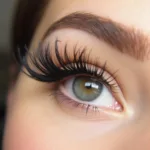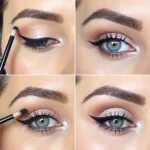
Trichotillomania and the Hair Stylist: A Guide to Understanding and Support
- AmazoniaSilva
- Tháng 1 20, 2025
- Zodiac signs
- 0 Comments
Trichotillomania, also known as hair-pulling disorder, can present unique challenges for both individuals experiencing it and the hair stylists who work with them. This article explores the intersection of trichotillomania and the hair styling profession, offering guidance, support, and resources for both sides of the chair.
What is Trichotillomania?
Trichotillomania is a mental health condition characterized by a recurrent, irresistible urge to pull out one’s hair. This can involve hair from the scalp, eyebrows, eyelashes, or other body areas. While the act of pulling may provide temporary relief or satisfaction, it often leads to feelings of shame, embarrassment, and frustration.
How Trichotillomania Affects the Client-Stylist Relationship
For individuals with trichotillomania, visiting a hair salon can be a source of significant anxiety. They might worry about their stylist judging them or noticing the hair loss. This can make open communication difficult, hindering the stylist’s ability to provide the best possible service.
On the other hand, hair stylists may feel unsure about how to approach clients who exhibit signs of trichotillomania. They may be hesitant to bring up the topic, fearing they might offend the client or overstep professional boundaries. This delicate situation calls for sensitivity, understanding, and a client-centered approach.  Client and stylist in consultation about trichotillomania
Client and stylist in consultation about trichotillomania
Tips for Hair Stylists Working with Clients with Trichotillomania
- Create a Safe Space: Foster a judgment-free environment where clients feel comfortable discussing their hair concerns. Active listening and empathetic responses can build trust and encourage open communication.
- Educate Yourself: Understanding trichotillomania will enable you to offer appropriate support and advice. Learning about the condition’s psychological and emotional aspects can improve your ability to connect with clients on a deeper level.
- Offer Realistic Solutions: Suggest hairstyles that can help camouflage hair loss or create the illusion of fullness. Be honest about what is achievable and avoid making promises you can’t keep.
- Recommend Resources: Provide clients with information about support groups, therapists specializing in trichotillomania, and other helpful resources.
- Respect Client Confidentiality: Treat all client information with the utmost discretion and respect their privacy.
Tips for Clients with Trichotillomania Visiting a Hair Salon
- Communicate Openly: If you feel comfortable, share your experience with trichotillomania with your stylist. This will help them understand your specific needs and concerns.
- Ask Questions: Don’t hesitate to inquire about hairstyles that can address your hair loss or minimize its appearance.
- Be Realistic: Understand that there might be limitations to what a stylist can achieve. Work collaboratively with your stylist to find the best possible solution.
- Be Patient: Finding the right hairstyle and stylist might take time. Don’t be discouraged if the first attempt doesn’t meet your expectations.
How to Talk to Your Stylist about Trichotillomania
Opening up to your stylist about trichotillomania can feel daunting. However, it can pave the way for a more supportive and understanding relationship. Start by simply stating, “I have a condition called trichotillomania, which causes me to pull out my hair.” This can open the door for a more in-depth conversation.
Conclusion
Navigating the relationship between trichotillomania and hair styling requires empathy, open communication, and a willingness to learn. By fostering understanding and providing support, stylists can play a crucial role in helping clients with trichotillomania feel confident and empowered. Managing trichotillomania successfully often involves a team approach, and a compassionate, informed stylist can be a valuable ally.
FAQ
- What are the common signs of trichotillomania?
- How is trichotillomania diagnosed?
- Can trichotillomania be cured?
- What are the treatment options for trichotillomania?
- How can I find a therapist specializing in trichotillomania?
- What hairstyles are best for concealing hair loss due to trichotillomania?
- Can hair extensions be used to cover areas affected by trichotillomania?
If you need further assistance, please contact us at Email: [email protected], address: Fifth Avenue, 34th Floor, New York, NY 10118, USA. We have a 24/7 customer support team.

